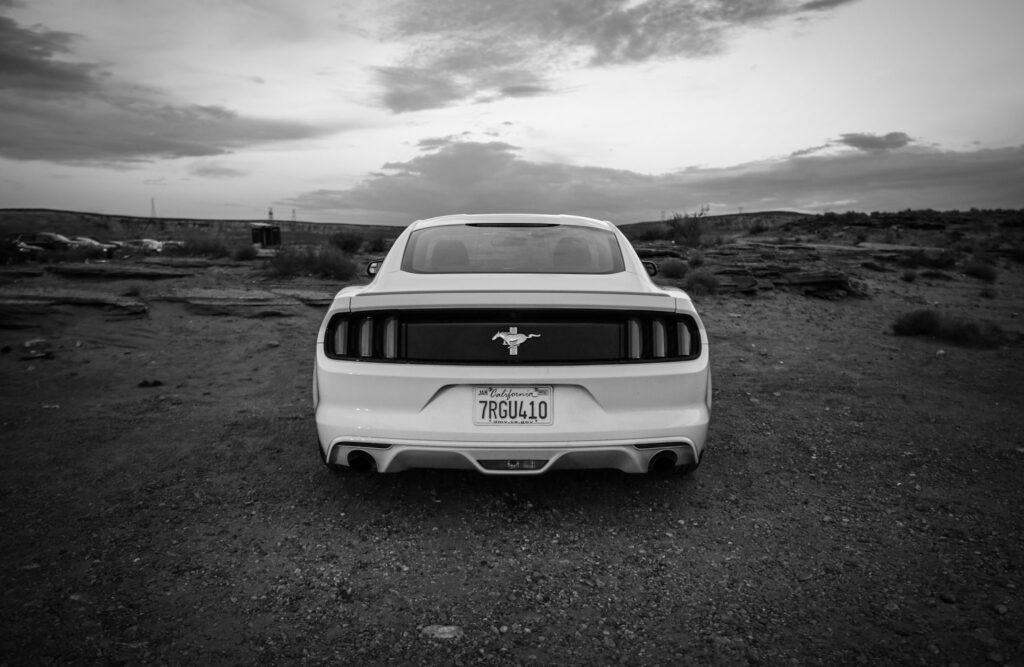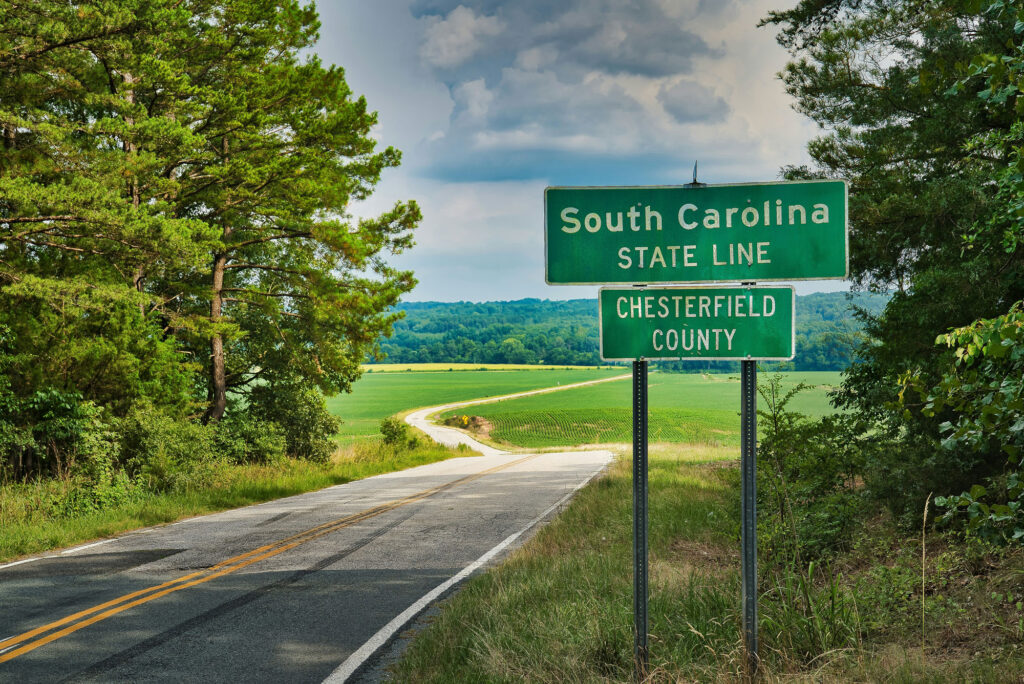
22 Apr Crossing State Borders With Ease On A Long-Haul Road Trip In U.S.A.
A long-haul road trip is exciting – and that’s true whether you’re in Southern Africa, the United States, or anywhere in between – but it also comes with its fair share of logistics, especially when crossing state borders. Laws, weather, toll systems, and even time zones can change instantly. Planning is the secret to keeping your trip smooth and stress-free (Chanel especially will attest to that). Here’s how to make those border crossings feel like another part of the adventure.
Know Before You Go
Every US state has different laws. Seat belt requirements or the rules about speeding in a construction zone can vary widely. Before your road trip, take a few minutes to look up:
- Hands-free vs. hand-held cellphone use rules
- Speed limits in rural areas vs. urban zones
- Child car seat or booster seat laws (if you’re taking your little one along)
- Left-lane passing restrictions
Pack For Convenience
Packing light is typically a good rule of thumb, but accessibility should be your priority for a long road trip. Think about what you’ll need on the road and keep items like these within arm’s reach:
- Phone charger and backup battery
- Reusable water bottle
- Sunglasses and medications
- A simple toiletries kit if you’re stopping overnight
Having a “go bag” for hotel stops saves time, so you don’t have to unpack the entire trunk. Always keep the weather in mind and check the forecast beforehand. Bring layers, a rain jacket and a blanket, especially if you’re traveling across different climates.

Optimize Your Road Trip Route
Google Maps or Waze will probably be your go-to, but prepare for areas with poor cell service. Chanel & Stevo recall having over two hours without any signal while road-tripping through America’s South-West…needless to say it was a scary two hours. Don’t do what they did, and download offline maps before you leave so you have a rough idea of your route. Going old school with paper maps can also be a helpful backup if you’re driving through remote areas or national parks.
Also, double-check directions before relying solely on your GPS. Some apps reroute through unnecessary backroads or construction zones. A quick preview of your day’s road trip route can save you hours of frustration.
Prepare Your Vehicle
Make sure your vehicle is in top shape before you head out. A breakdown in the middle of nowhere can be dangerous, especially if you’re crossing remote areas or unfamiliar terrain.
Start with the basics. Check your tire pressure, inspect the brakes, test the battery, and top off all fluids like oil, coolant and windshield washer. Don’t ignore warning lights — get them checked before you leave. It’s also wise to get an oil change if you’re due or getting close to the limit.
If you’re hauling a trailer, ensure it’s roadworthy, too. Inspect the tires, lights and hitch connection. Follow the 60/40 weight distribution rule — aim to load 60% of the total weight in the front half of the trailer and 40% in the back. This practice keeps the trailer balanced and stable while driving, reducing the risk of fishtailing or swaying.

Have An Emergency Road Trip Kit On Hand
You never want to get stranded on the side of the road with no supplies. Packing a few essentials can make for a smoother trip and boost your confidence on the road. A decent emergency kit should include:
- Jumper cables
- A flashlight with extra batteries
- First-aid supplies
- A basic tool kit
- A tire pressure gauge and tire sealant
- Bottled water and nonperishable food
- Extra phone charging cables and a power bank
And don’t forget a small stash of cash — some rural areas still have toll booths or gas stations that don’t accept cards.
Watch For Time Zones
Crossing into a new time zone might not seem momentous, but it can throw off hotel check-ins, dinner plans, or even your sense of how long you’ve been driving. While your phone will usually adjust automatically, it’s smart to anticipate the change — especially if you’re coordinating with other travelers or meeting someone along the way.
Fuel Up
Don’t push your luck with the gas gauge. Gas stations may be few and far between on long-haul routes, especially those across rural or mountainous areas. Try not to let your tank drop below a quarter full, and check your route in advance to see where reliable fuel stops are.
Gas prices also vary between states. Use apps like GasBuddy on your road trip to check whether it’s smarter to fill up before or after crossing a state line.

Have Your Documents Ready
Make sure your driver’s license, vehicle registration and insurance documents are up to date and easy to find. If you’re driving a rental, check that the contract and insurance information are in the glove box.
If you’re in the United States and your trip includes international borders — like Canada or Mexico — you’ll need a passport and international insurance coverage. Research those requirements ahead of time and make extra copies of relevant documents.
Mind The Tolls
Toll policies can differ widely between states. Some still use cash booths, while others rely entirely on electronic systems.
If you’re crossing multiple states, consider getting a toll transponder like E-ZPass, which over a dozen states accept. It’ll save time and help you avoid surprise fees. Keep coins and small bills in your car in case you hit an older toll system that doesn’t accept cards.
Snacks And Rest Are Crucial
Driving for hours without a break increases the risk of fatigue and poor decision-making. Plan to rotate drivers at least every two hours if you can so everyone gets a chance to rest. If you’re traveling solo, stop every two hours, even if it’s only to stretch your legs and grab a snack.
Rest areas and welcome centers often offer clean restrooms, vending machines and maps. They’re also good places to regroup, especially if you’re traveling with kids or a caravan of cars.

Stay Aware Of Weather And Road Conditions
The climate can shift quickly on a long-haul trip — sunshine in one place, snow or storms a few hours later. Check the weather forecast for each leg of your journey and prepare your car for what’s ahead.
If you’re traveling in winter, keep an ice scraper, sand, tire chains and blankets in your car. In summer, bring extra water and watch for signs of overheating. Always adjust your speed for the conditions, even if the posted limit stays the same.
Arrive Confidently
Simplify your road trip by planning wisely and researching each state’s road rules. Whether you’re driving solo or with family, being proactive can make all the difference. Happy planning and happy adventuring!
Author bio: Jack Shaw is a freelance lifestyle writer and dedicated traveler. His writing focuses on exploring the food, culture and beautiful views of wherever life decides to throw him. Stories of his travel can be seen in Modded, Trekaroo, The Travel Magazine and more. Jack has a love of all things outdoors, and spends much of his free time taking on local hiking trails and state parks.
If you enjoyed this post, you may want to follow Chanel & Stevo’s journey on Instagram, YouTube, TikTok, and Pinterest, browse through the HFFH Shop, or check out some other popular articles on the blog.
Disclaimer: some links in this blog post may be sponsored or affiliate links, meaning that we receive a small percentage (at no extra cost to you) if you end up buying through the link. We appreciate the support! You can read our full privacy policy here.



Angie
Posted at 14:20h, 23 AprilAs an international reader, this article seems shockingly tone deaf for the times.
Chanel
Posted at 11:27h, 24 AprilOh no, sorry to hear that Angie…if we may ask, which country are you reading from? Any advice for our contributor writer on how to keep it more in tune with this day and age? Your feedback will no doubt be useful for other readers too.